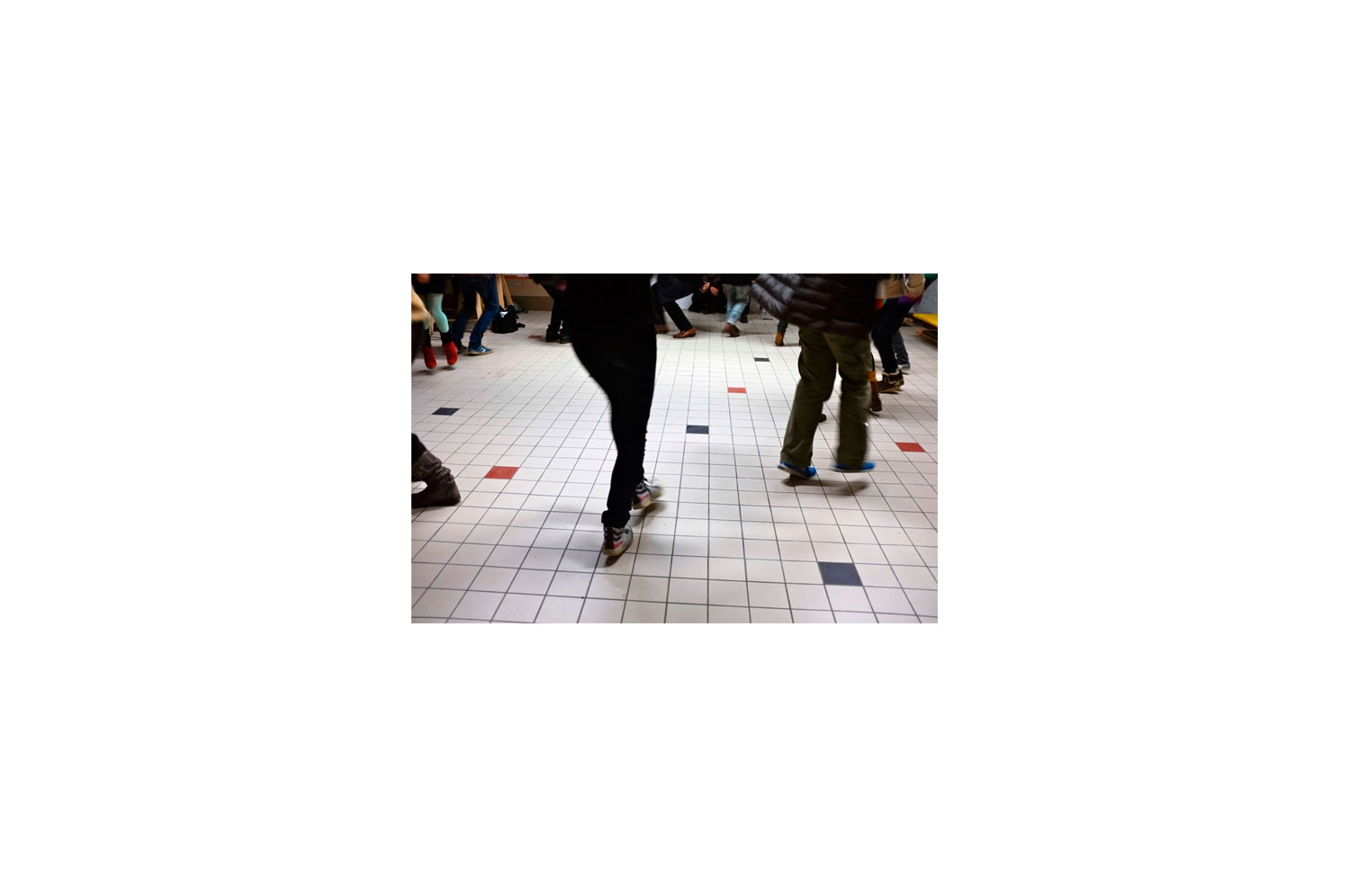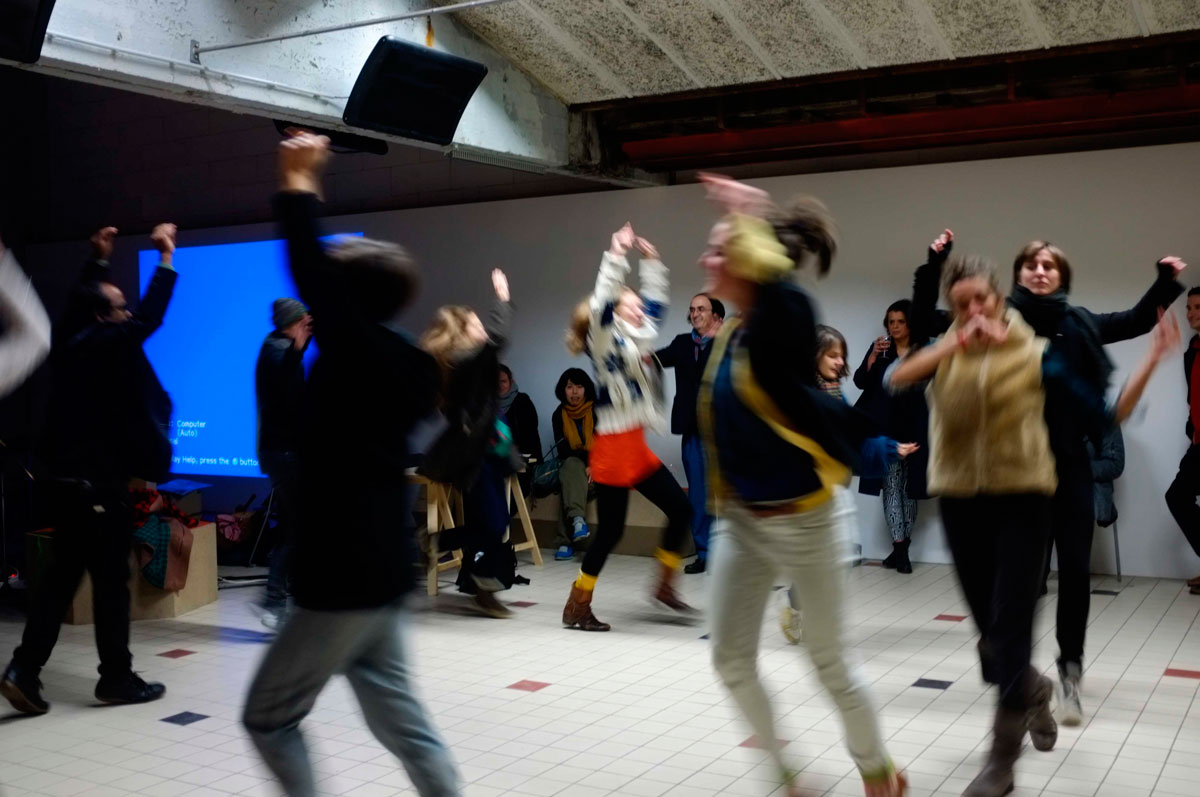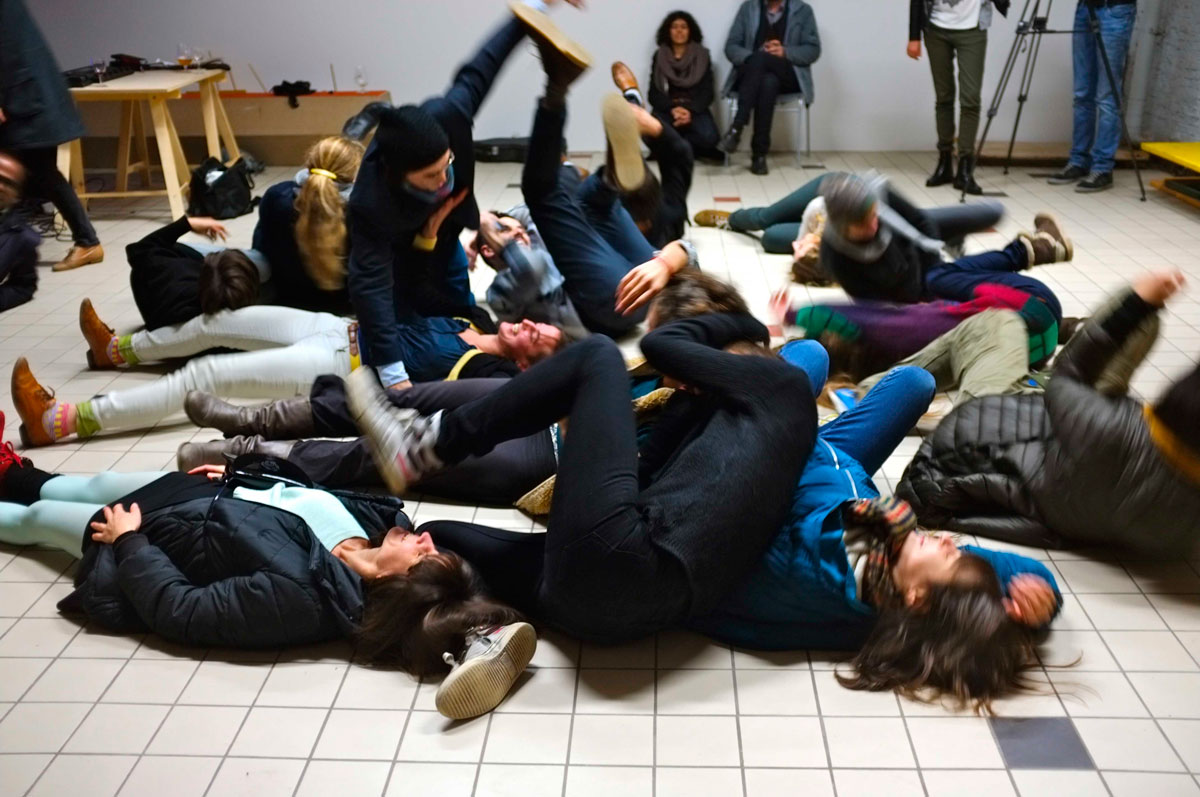“exedra”
Installation
LACAPELLA
2020
An εξέδρα (exedra) was originally a semicircular stone bench located at the bottom of the apse of the Christian chapels. An architectural device that facilitated contact and conversation between different interlocutors.
One of the premises of the design was to move away from standardized institutional approaches to participation and social engagement––the do-it-yourself aesthetics, the use of bright colors referencing pedagogic spaces, the references to deskilling …
The aim was to solve the actual isolation that normally exists between the objects discussed and the educational practices built around them (which take place in rooms away from the gallery), thinking about a light object that could be placed amidst the exhibition space confronting the artworks. This presented a two-fold challenge. On the one hand, the need to create an intimate space for conversation. On the other hand, to come up with a design which did not interfere and distort the actual environment of the exhibition space, normally filled with interventions ranging from small installations to large scale reenactments.
The design of the structure is by Lluís Alexandre Casanovas and the iron work of Oxido taller.
More info on Ferreiro’s project here: https://lacapella.barcelona/en/exedra-exedra
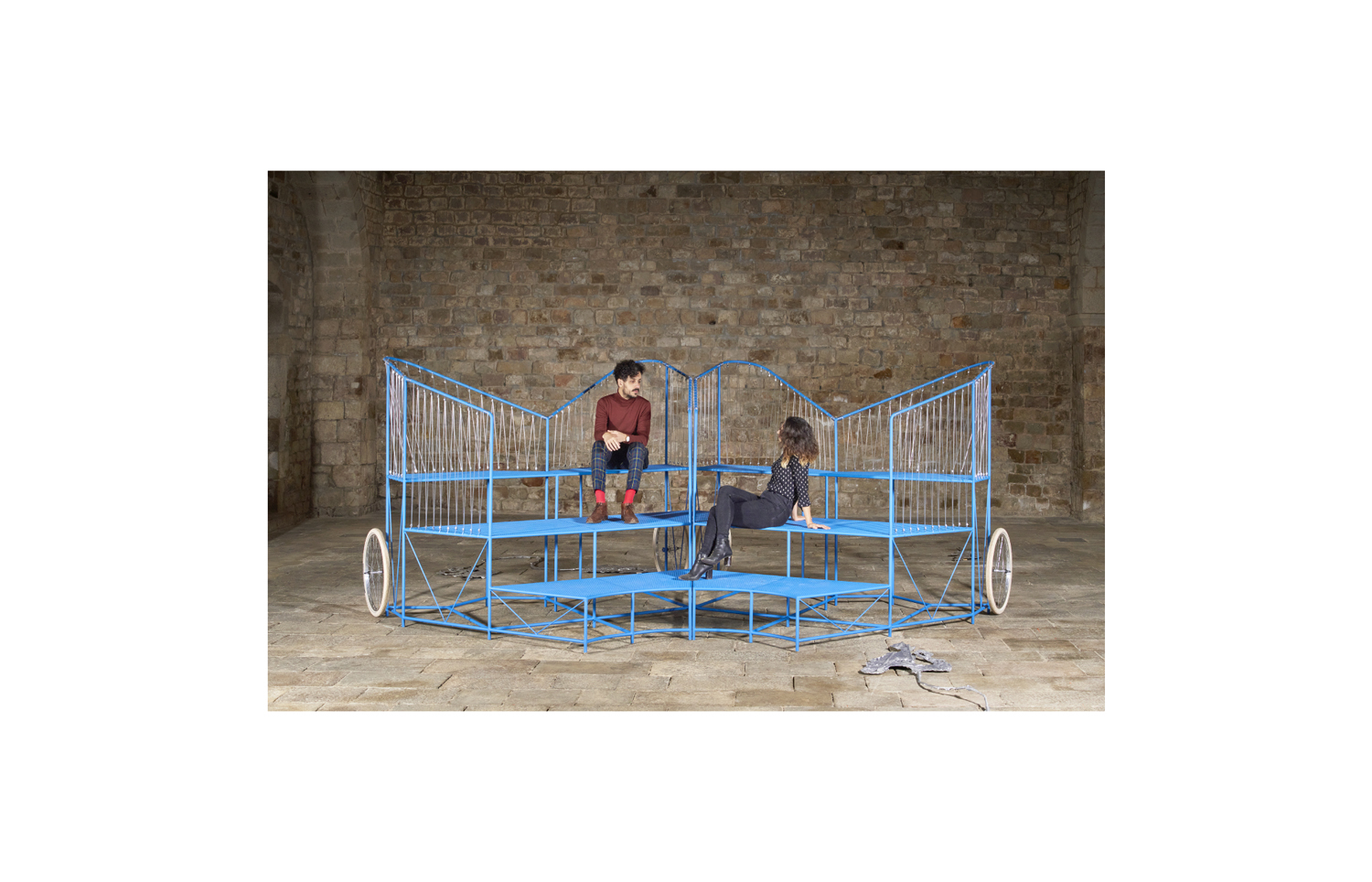
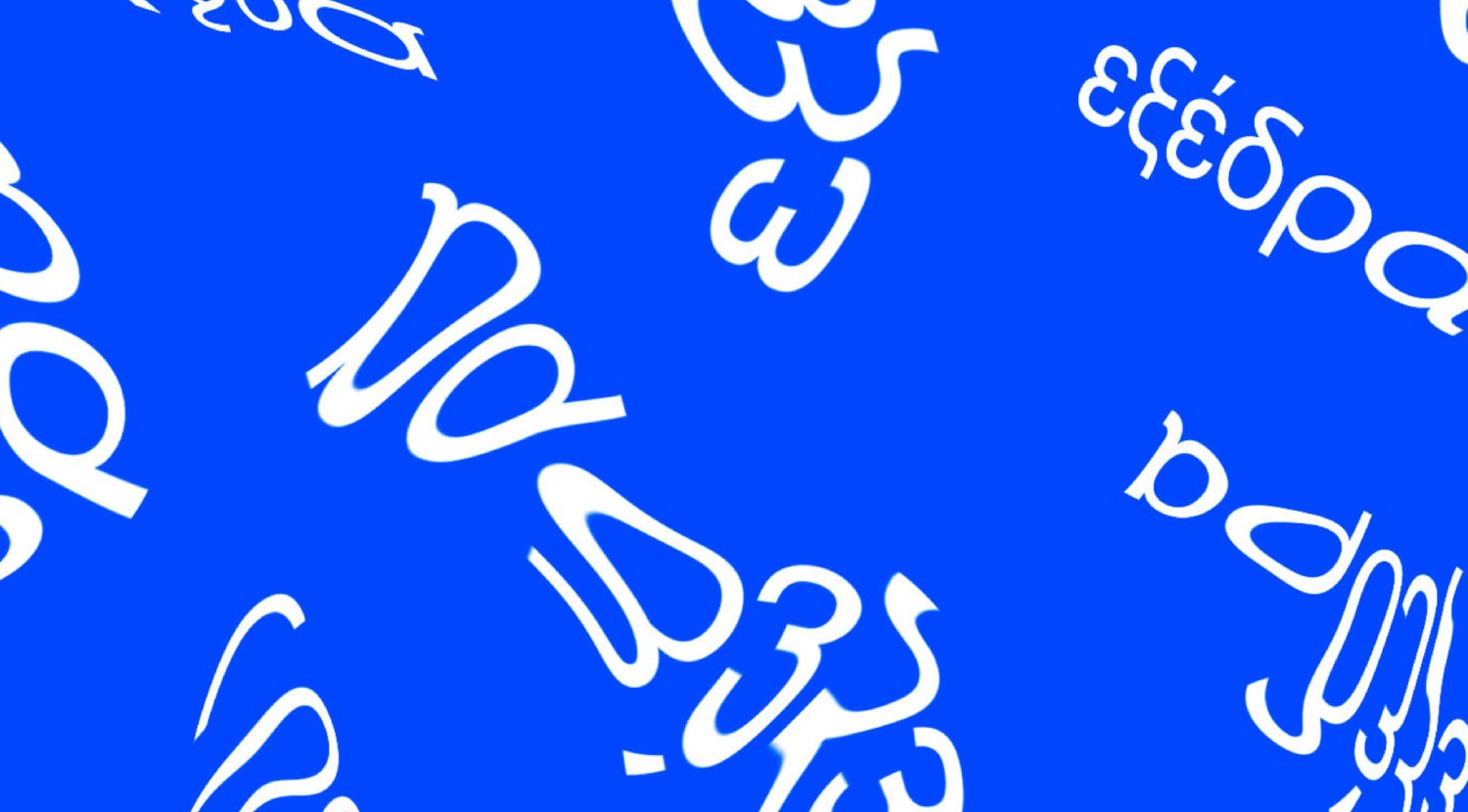

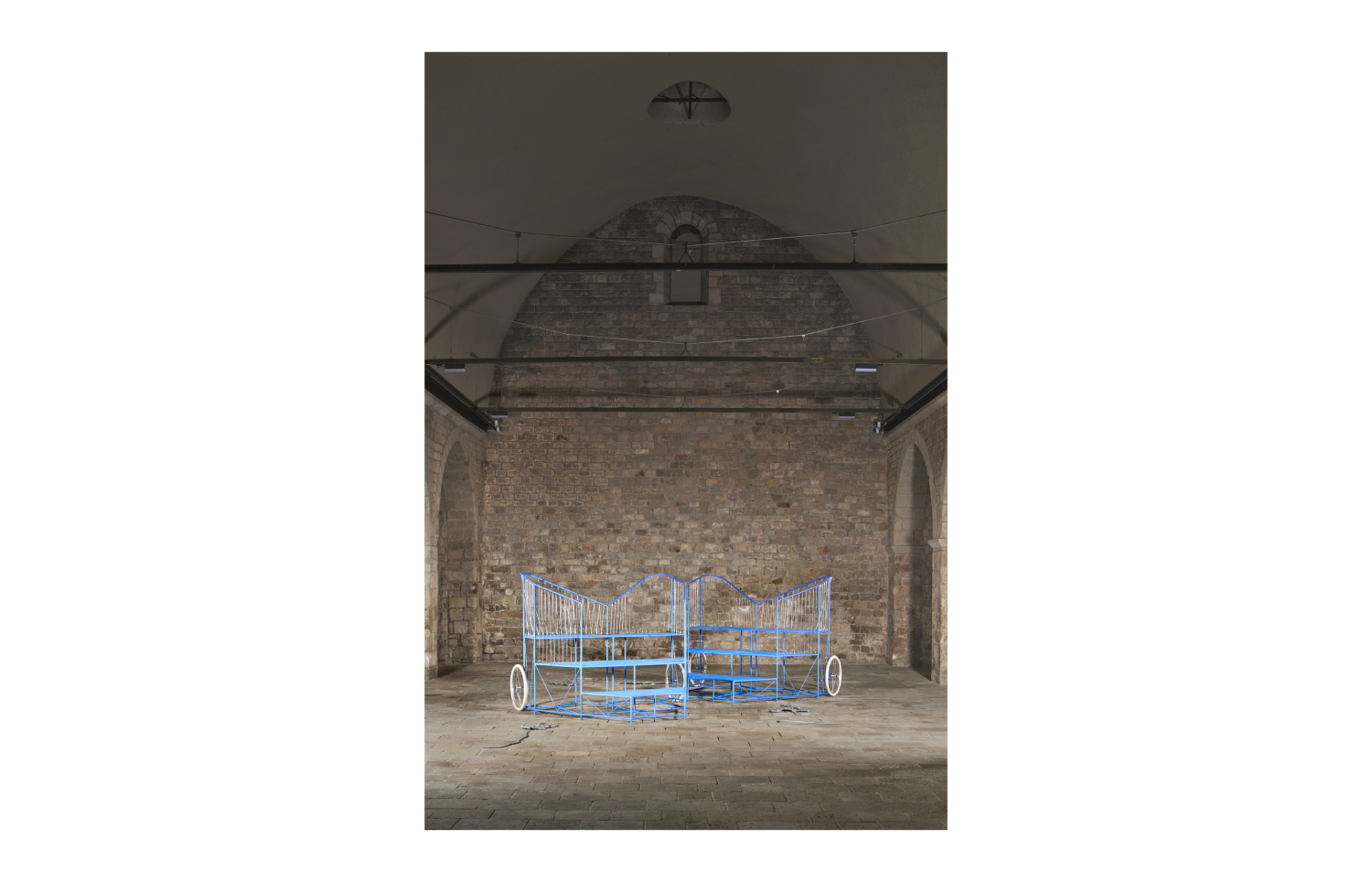
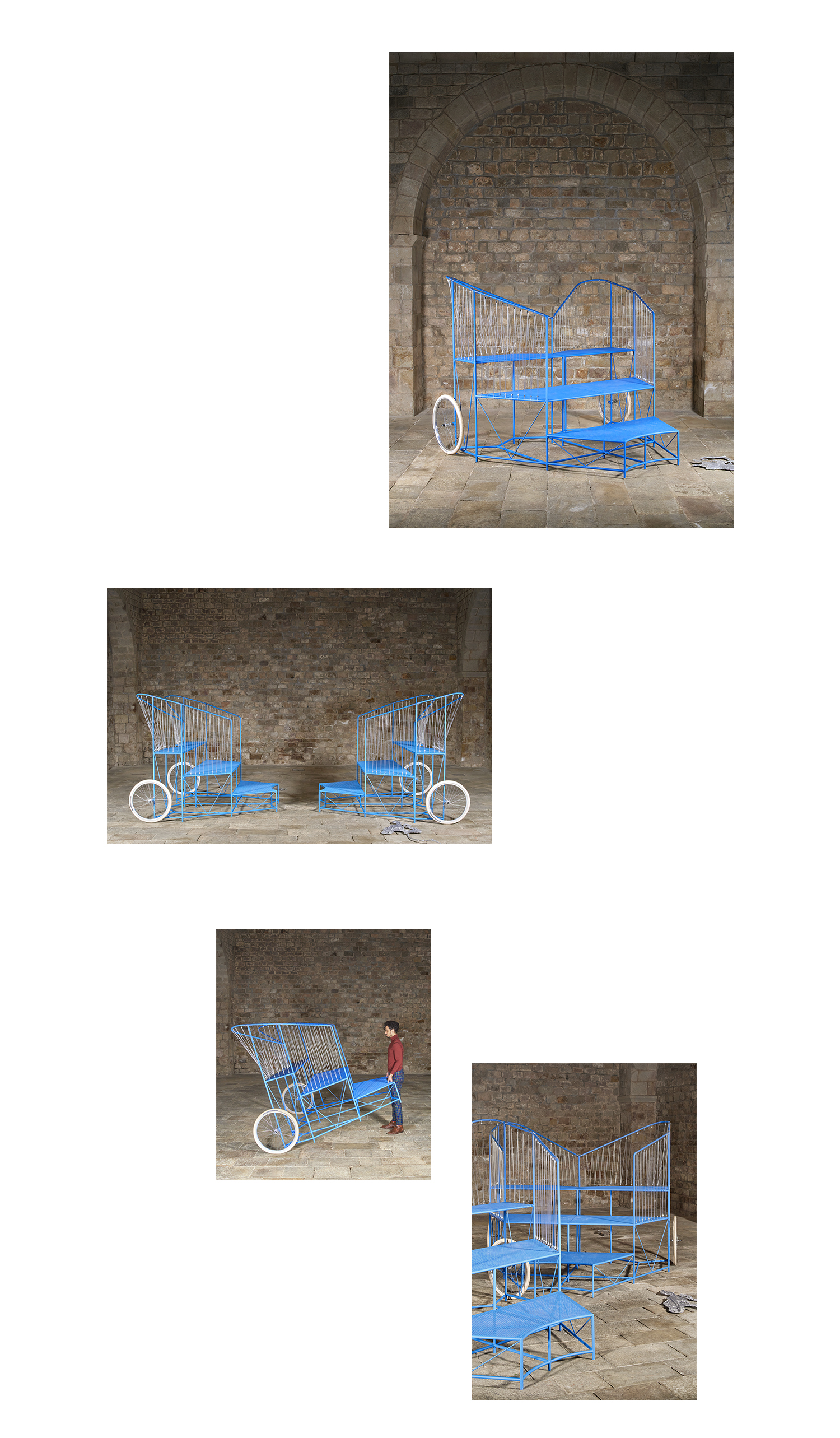
“A proposal for action”
Ongoing project
2018
“A collection of stolen or duplicate keys to cultural institutions that I’ve worked in are placed in the exhibition space as a proposal for action to the visitor.”

“Inhabit the institution”
Installation and performance
2017
Inhabit the Institution is situated halfway between a public programme of interventions in the exhibition space and an artistic installation. The programme of activations consisted in a daily succession of performative actions carried out by the museum’s “inhabitants”: the visitors, staff, agents and others who coexist within the exhibition space of the institution. The question underlying the project was: What can a museum learn from the people who inhabit its spaces?
To carry out this project, a series of structures of different shapes and sizes were built. These functioned as elements of an artistic installation and as platforms or stages from which to perform the different actions each day. The exhibition space was thus “inhabited.”
The timetable of this public programme was coordinated by the department of education/public programmes. It benefited from a public call and from the assistance of the Chilean museum network. During the 45-day project, around 30 activations were carried out with a variety of collectives, including museum staff (workers from the exhibition, education, cleaning, and security departments); and visitors (school and university groups, workers from other museums, and so on.)
The aim of the project was to parasitize the exhibition space and reclaim it as a space where proposals formulated outside the museum could take place. A space of possibilities where – despite a certain tension with the usual dynamics of the institution – a mechanism of understanding between the museum and its users could be generated.
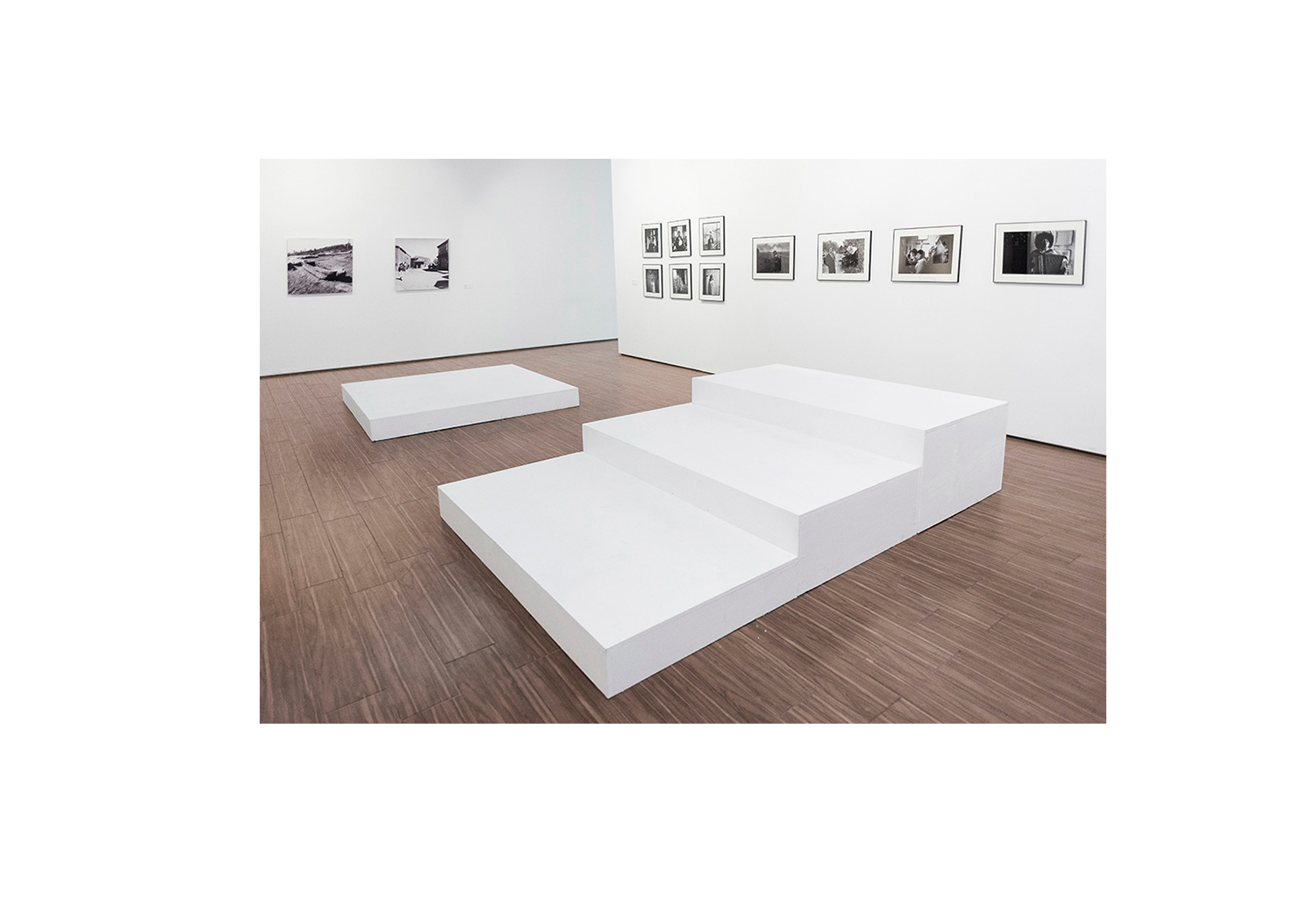
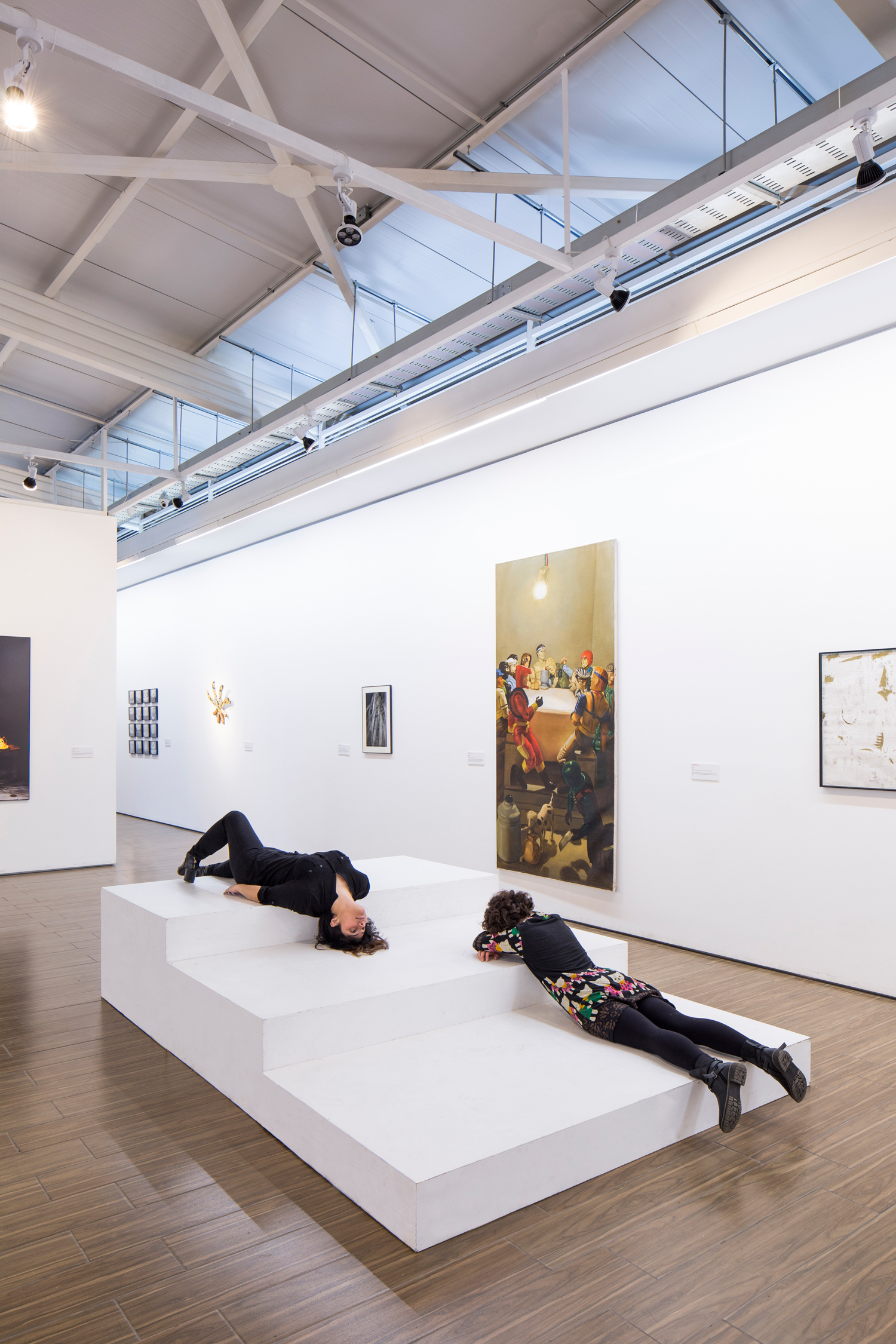
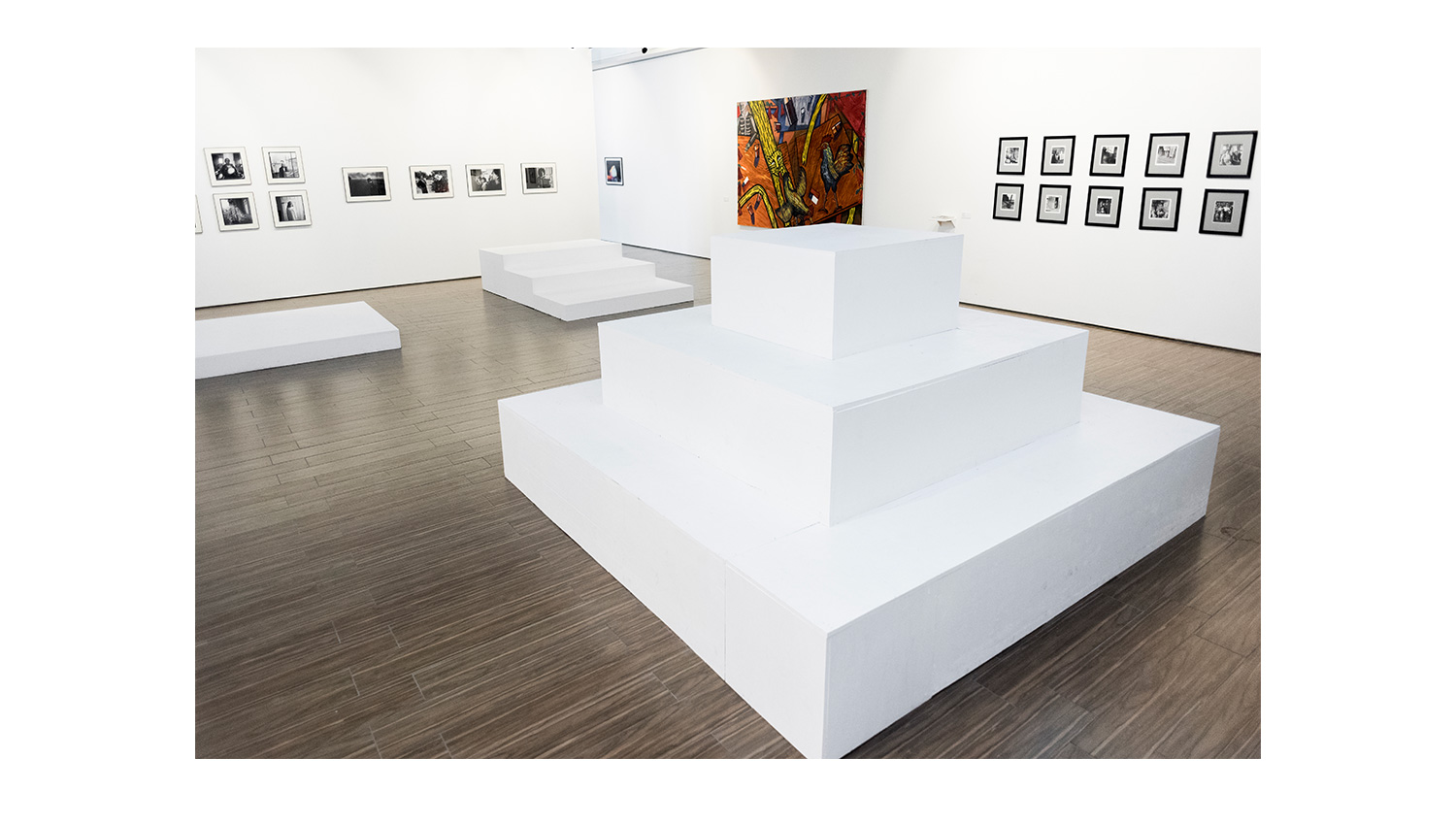


“Un cuerpo de mi propiedad”
Happening
Whitechapel gallery (London)
2017
A Body of My Own was a collaboration with the Whitechapel Gallery’s youth forum “Duchamp & Sons” to create an event in the neighbourhood of Whitechapel through the use of body, participation and public space.
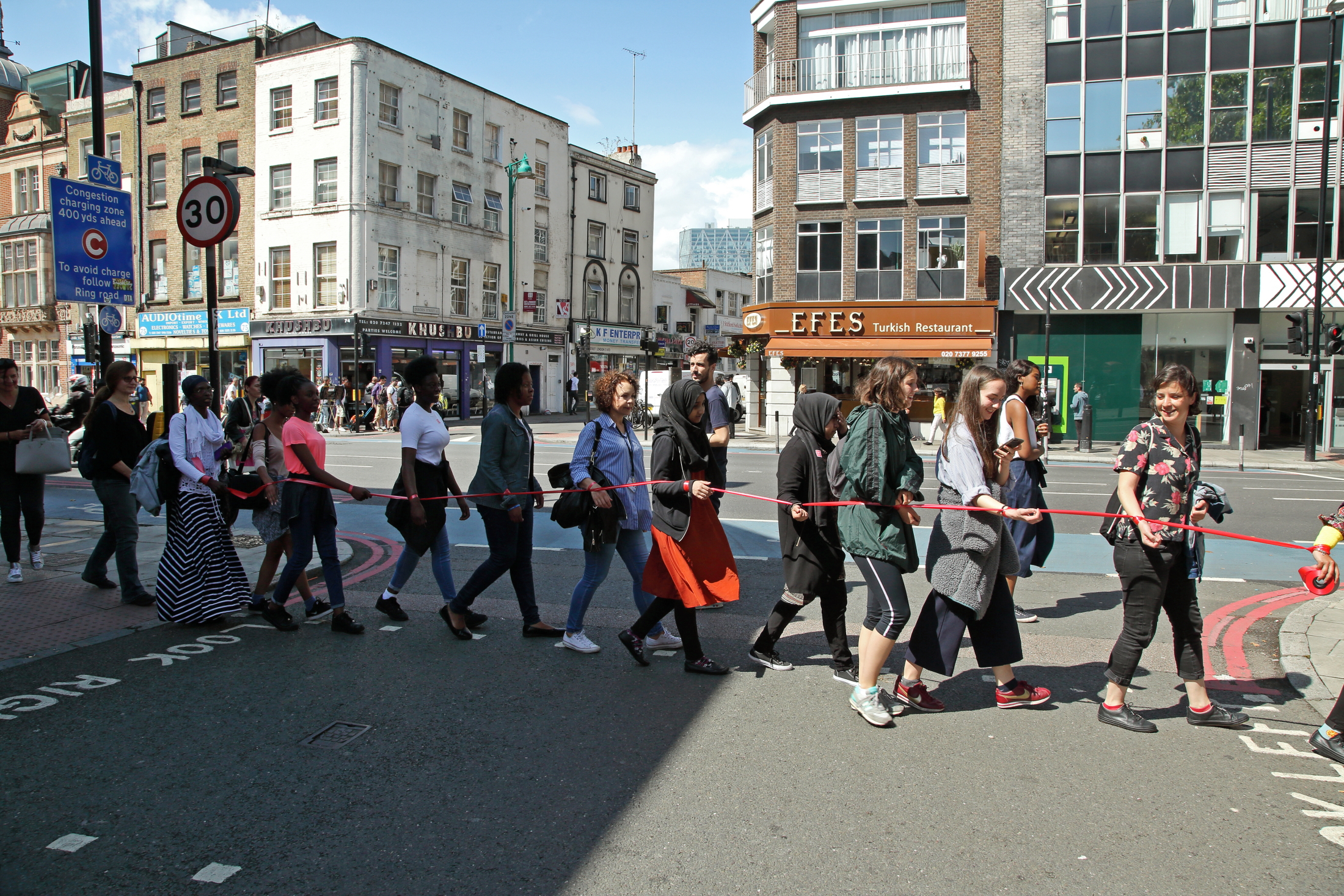
“When the museum closes its doors”
Installation/performance
MAC (Mataró) 2016
This project is a site-specific intervention exploring the relationship between art and magic, from prehistory to the avant-garde. The walls of the exhibition space in Can Palauet were covered with a series of phrases, collected from a variety of sources, talking about how art has been considered a method of communicating with the invisible.
The only way to read the invisible phrases is by taking part in a performance which begins at 8 PM, when the museum closes its doors, turns off the lights, and the exhibition display is deactivated. This performance functions as a “guided anti-visit” or “non-guided visit”, in which the public activates the phrases with the aid of black-light flashlights. The experience is mediated only by decisions made by the public; the interventions of different performers; and the use of music, gesture and voice.
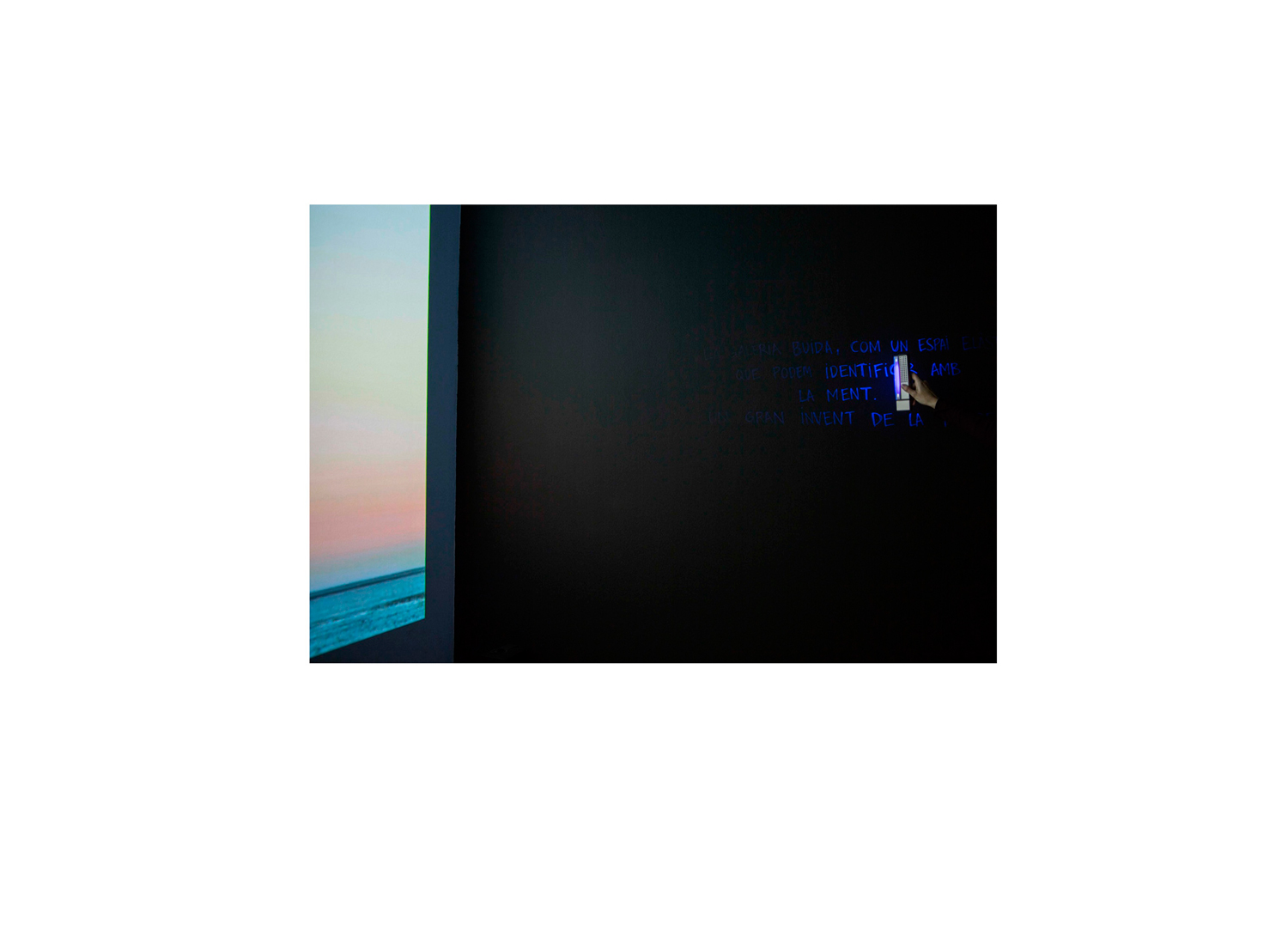
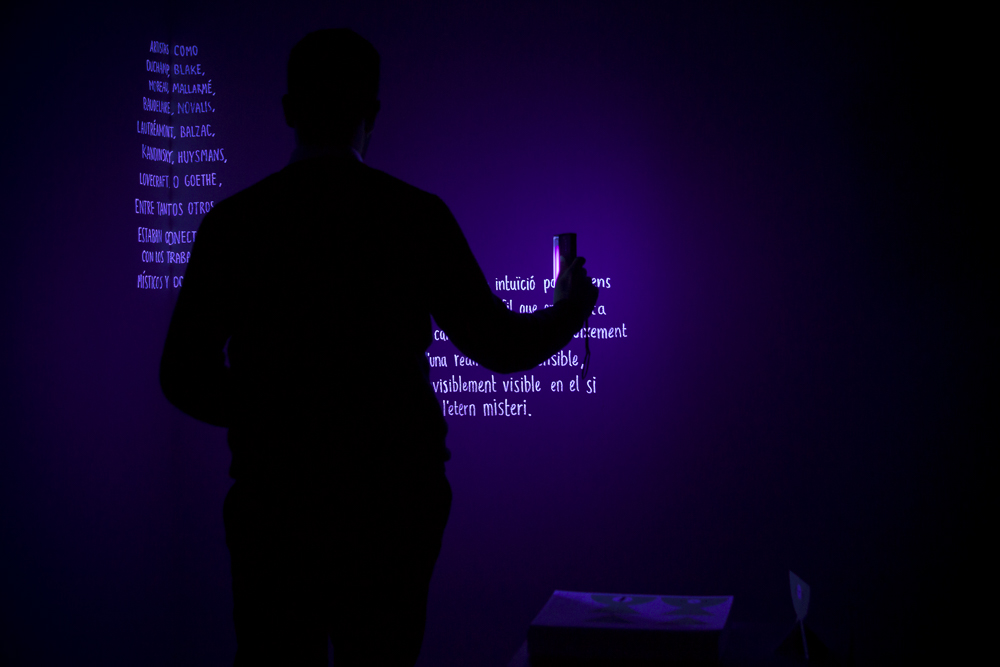
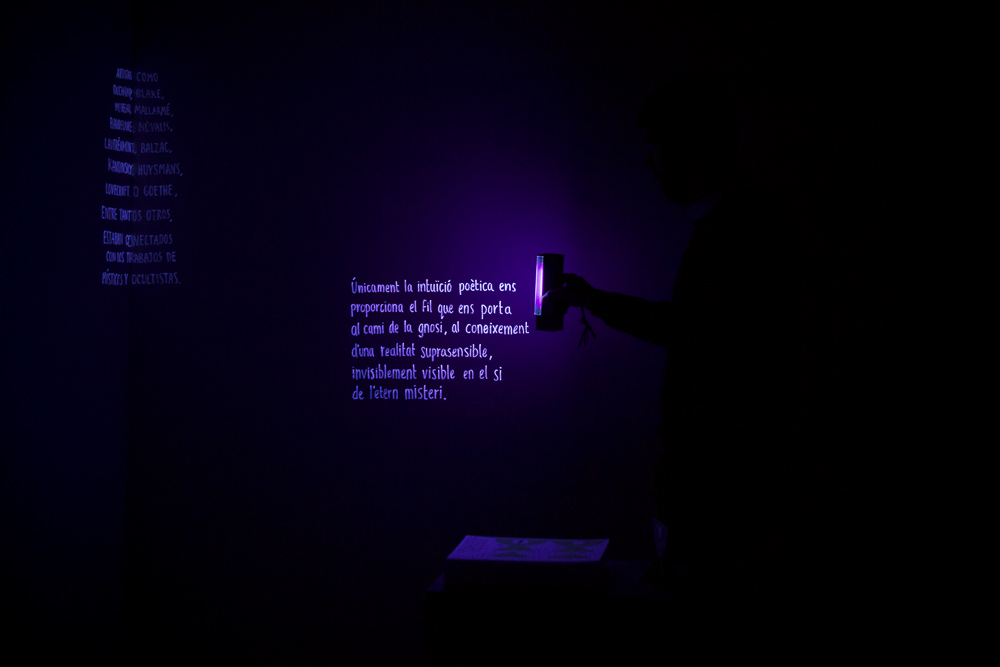
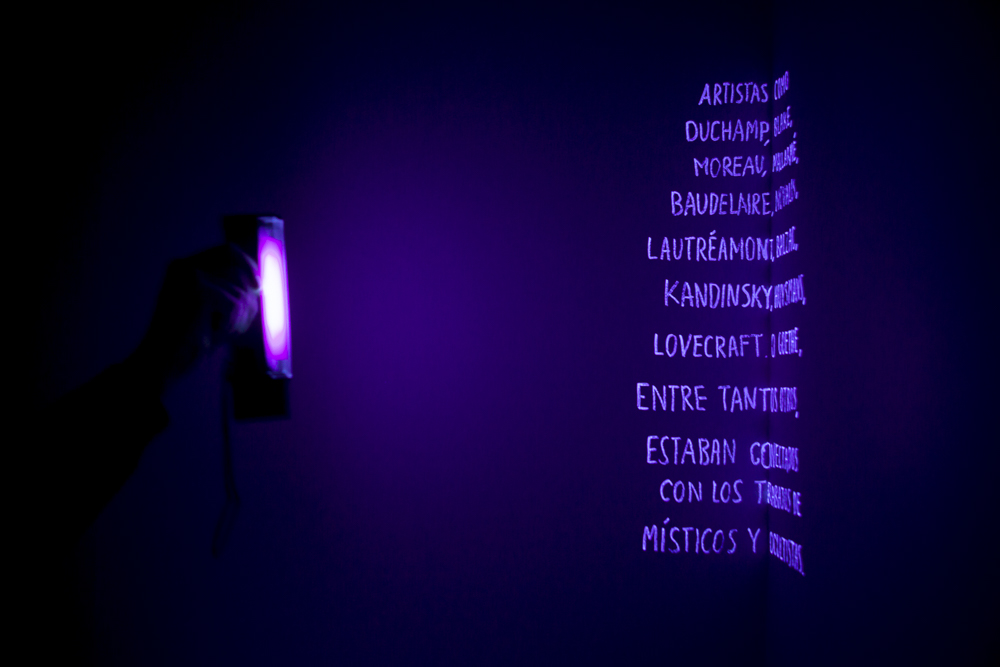
Legitimate museum
Intervention in lockers
MACBA
2017
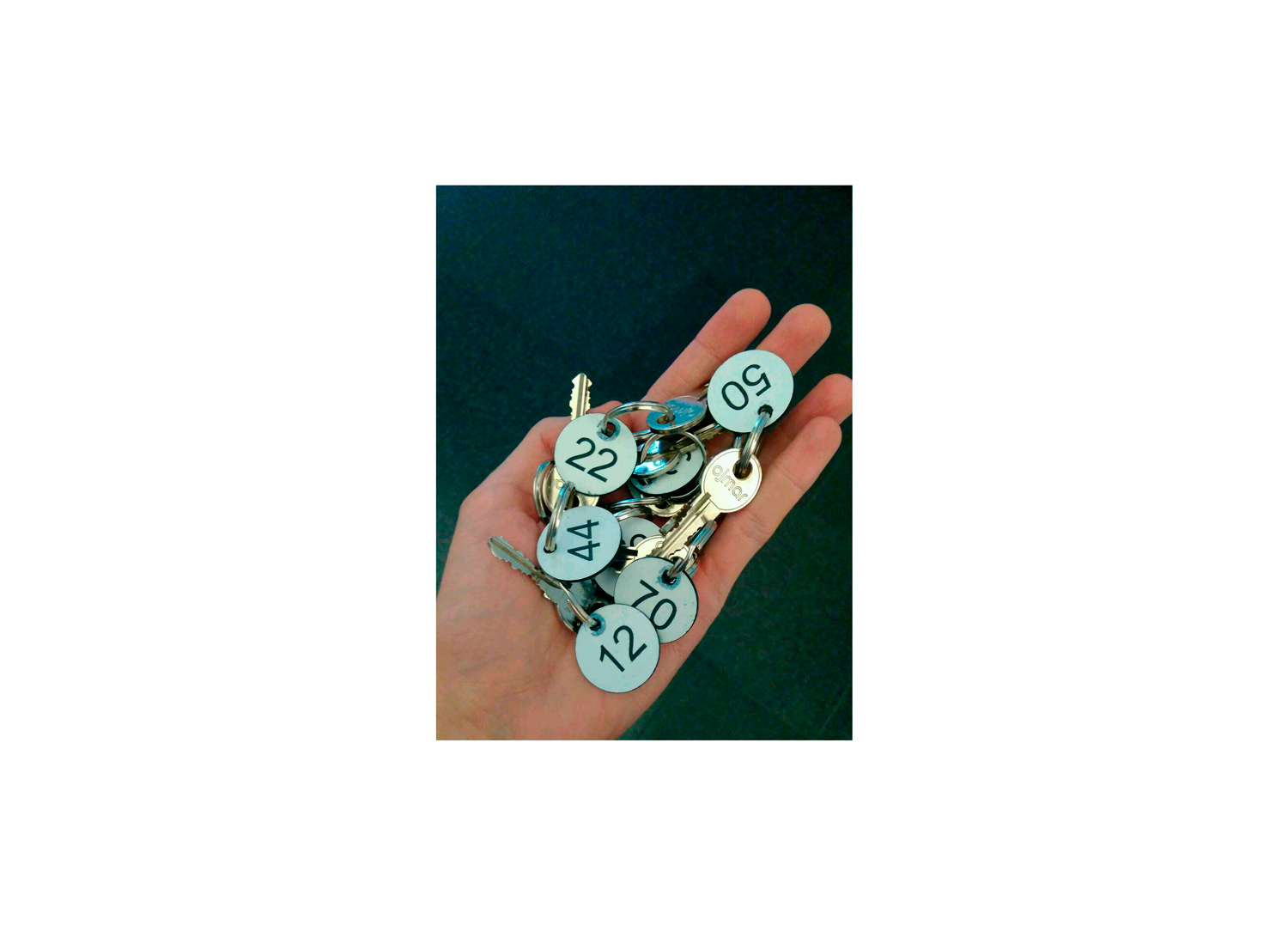
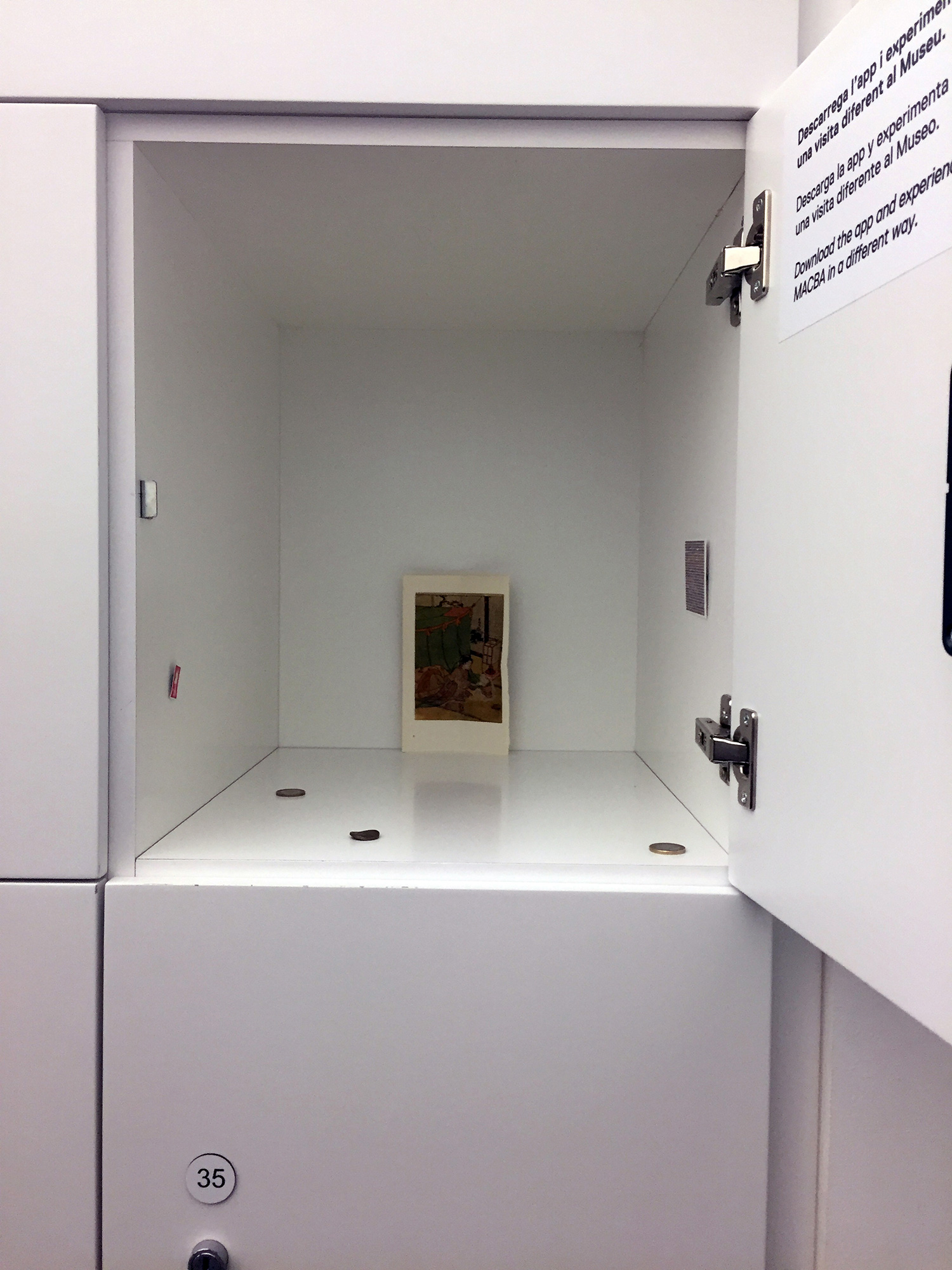

“El observador no está separado del objeto observado”
Wood, mirror and etched glass vinyl.
Lugar a dudas (Cali)
2015
Part of a series of site specific text installations that investigate the relationship between significance and the observer. For the work to be contemplated, direct interaction by the spectator is required.
The work “The observer is not separate from the object observed” was installed on a library table in Lugar a Dudas (Cali) in a way the reader can see his own image reflected and also the books of the library.

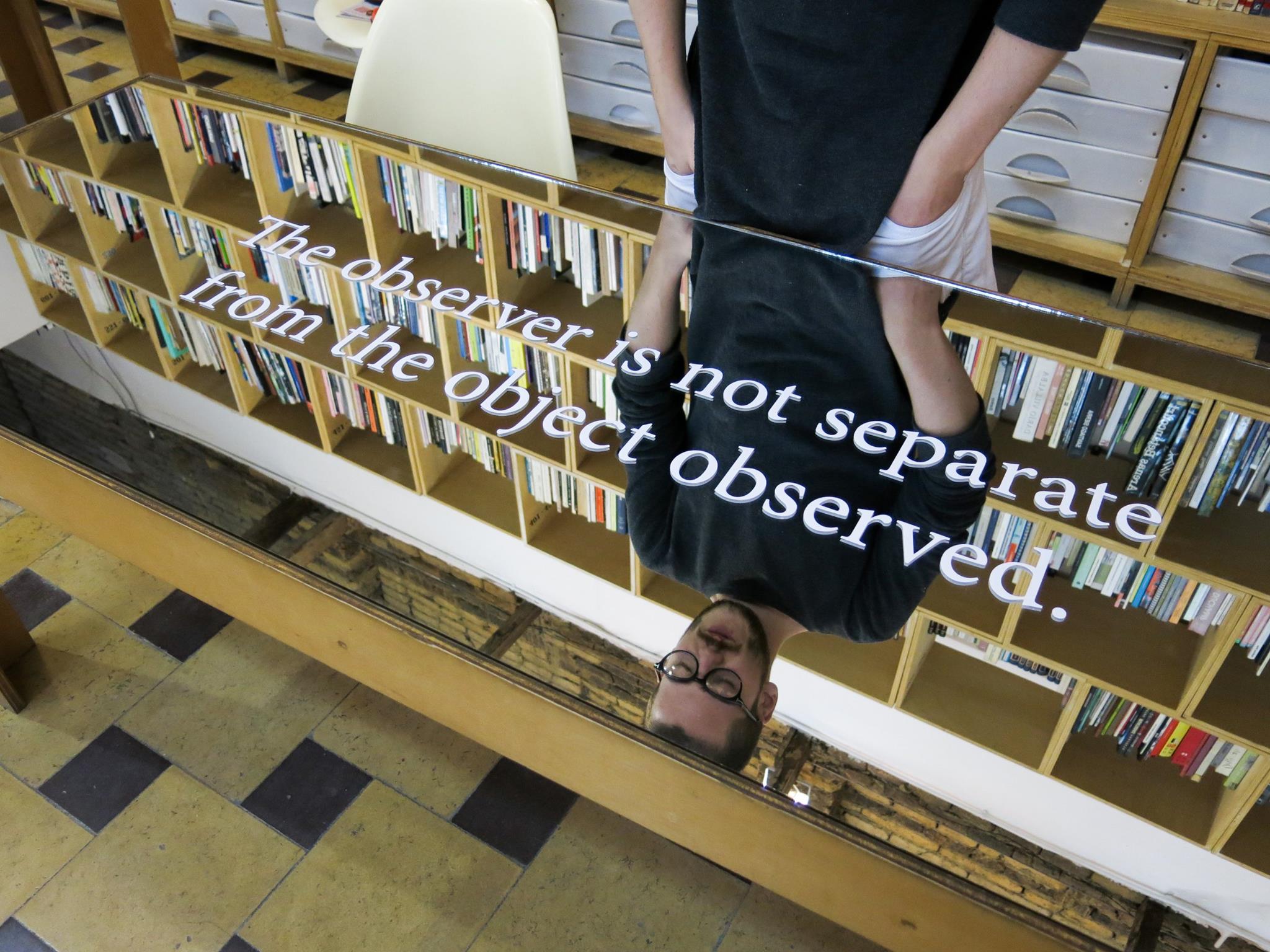
Participative Performance
At Zacheta Gallery, Warsaw
2012
Using the museum’s “public-address system”, a femenine voice reads in Polish every 3 hours a questionnaire of 15th questions to the exhibition’s public.
The questions are related to their role as spectators and their relation with the museum and Contemporany Art. For answer those questions, the public have to realise different actions crossing the line of a passive spectator and the allowed behaviour in the museum.
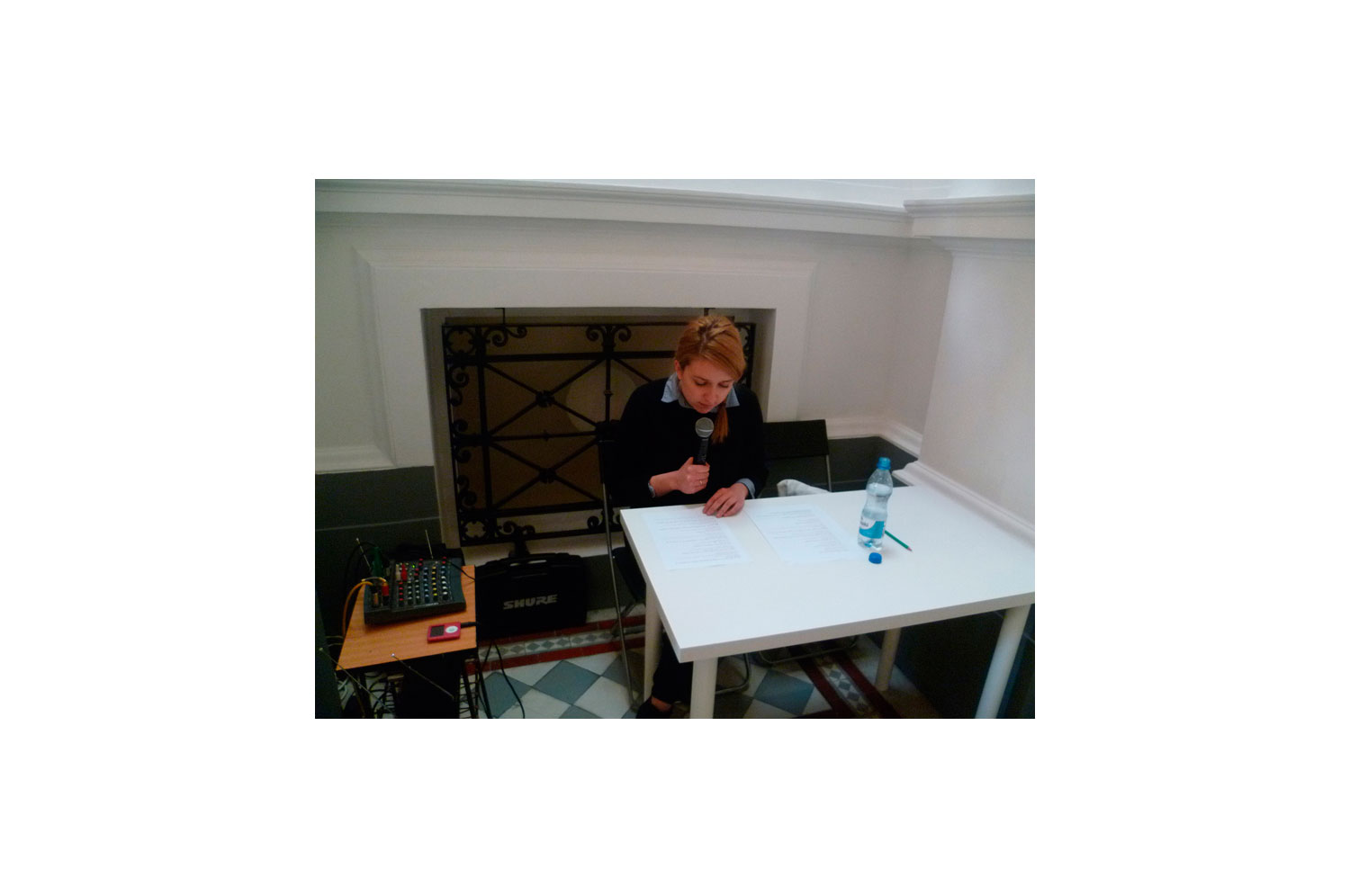
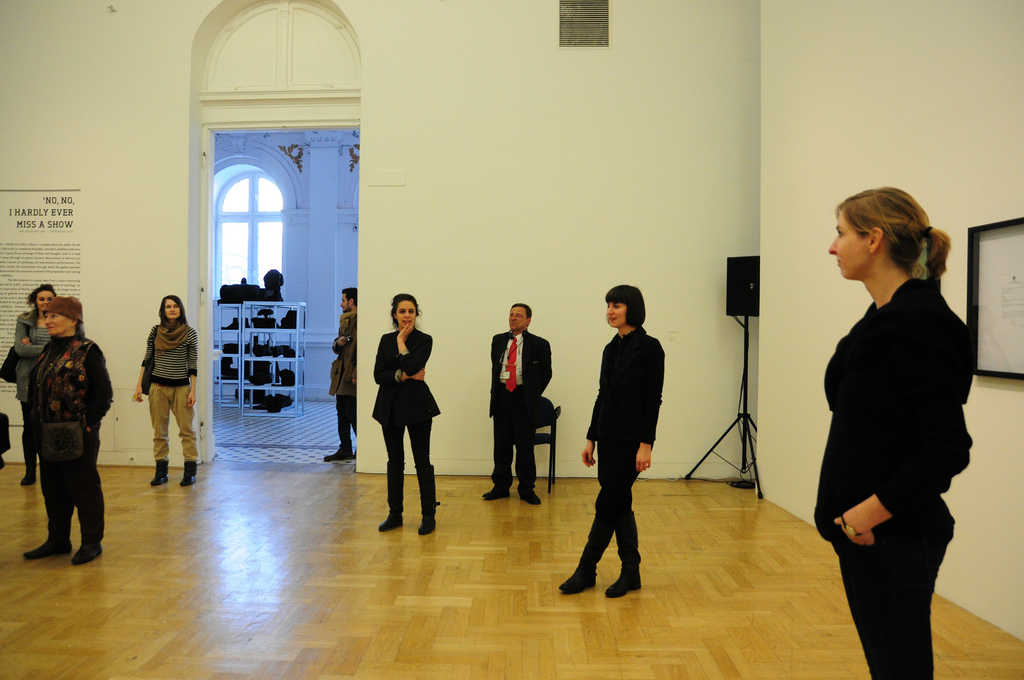
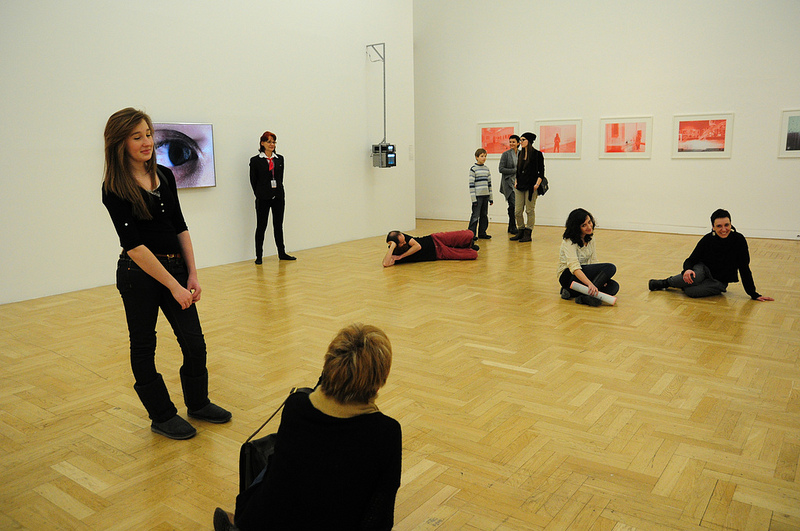
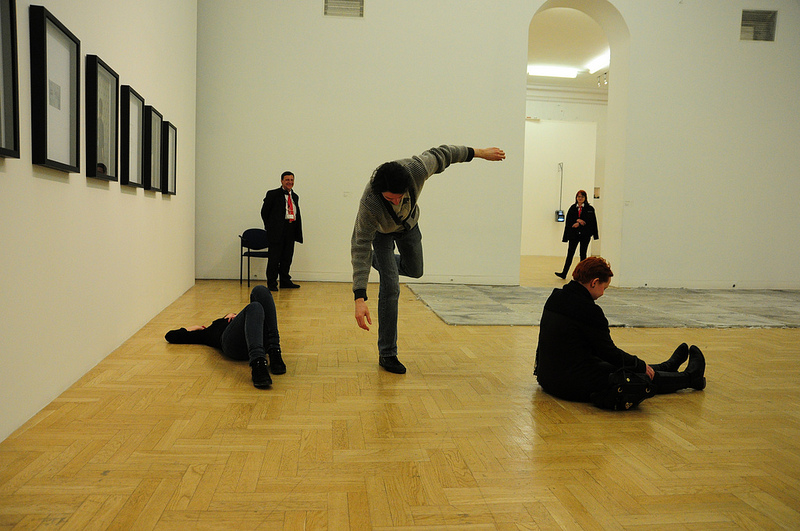
Extra city (Antwerp)
Performance
2013
The pantomime ballet is a performance where a group of people is led by a dancer (Katrien Oosterlinck) in silence through an exhibition, using music, movement, gesture and dance.
The project revolves around the idea of “collective dance” as Barbara Ehrenreich coins the term “collective joy” to describe a group of activities which involves music events, synchronized movement, costumes, and a feeling of loss of self, erasing social boundaries, encourages participation as a near-religious experience.
Skipping verbal communication and only by the use of music and gesture, the dancer starts with instructing the participants with simple movements, finishing with collective actions and different ideas of collective dance such a Sardana (Catalonia), Hasapiko (Greece), Maypole (Germany), etc …
